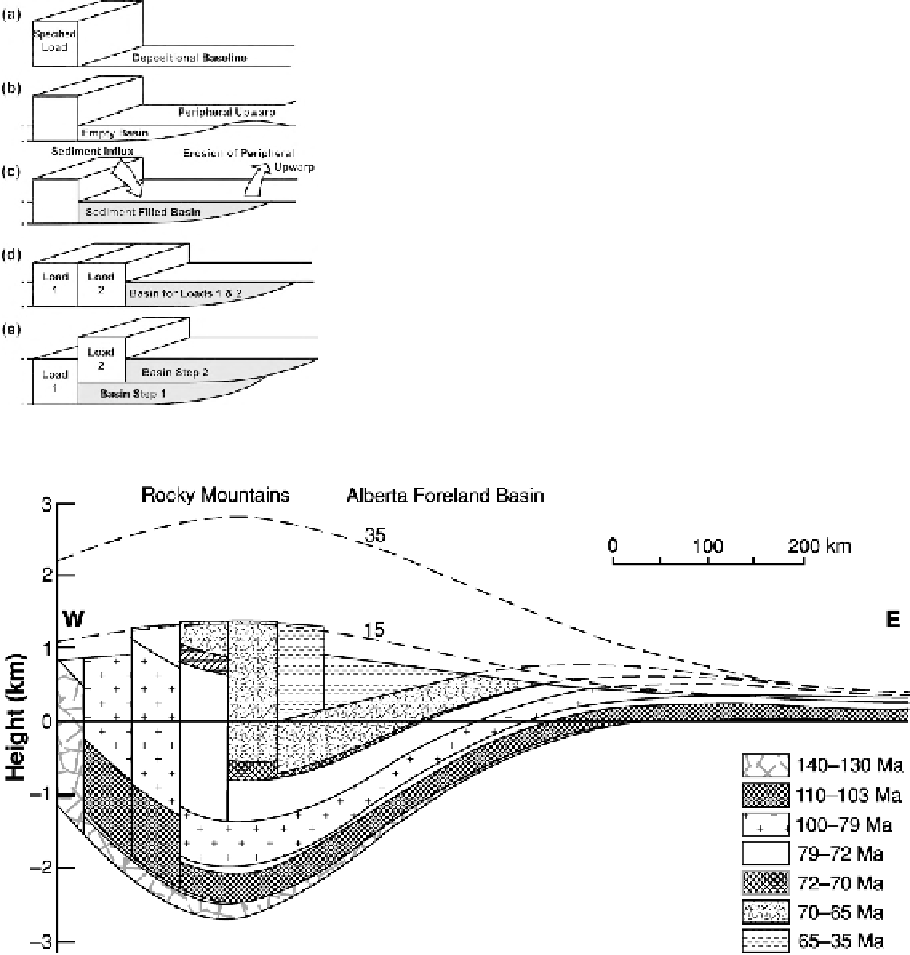Geoscience Reference
In-Depth Information
Figure 10.36.
How a load on the surface of the lithosphere forms a
depression, which, when filled with sediment, becomes a foreland
basin. (a) Load is emplaced. (d) Depression forms. (c) Sediment fills
the depression, and erosion eliminates the forebulge. (d) Two loads
are emplaced simultaneously. (e) Two loads are emplaced
sequentially, resulting in a different basin from (d). (After Beaumont
(1981).)
Figure 10.37.
A cross section of a loading model for the Alberta Foreland basin. The
vertical column loads emplaced during each time interval are shaded like the
sediments which filled the resulting depression. Dashed lines denote sediment
surfaces that have since been eroded. Since loading stopped 35 Ma ago, massive
erosion of the load (thrust pile) and the youngest sediments has taken place. Thus,
35 Ma ago the Paskapoo formation was some 1.5-2.0 km thicker than it is today, and
almost 10 km of material has been removed from the centre of the thrust pile. The
flexural rigidity of the lithosphere for this model was 10
25
Nm, and the viscoelastic
relaxation time was 27.5 Ma. (After Beaumont (1981).)

